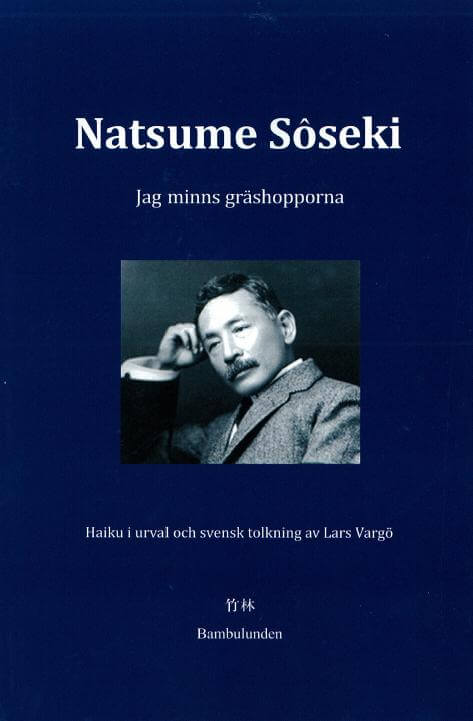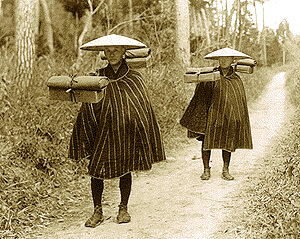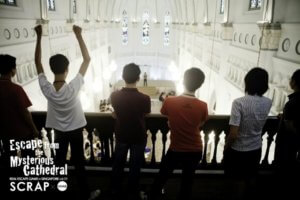Lars Vargö, Swedish Ambassador to Japan: “I felt I’ve come back home”
CONTENTS
By Ryoji Shimada, staff writer
So said Ambassador Vargö, who has been assigned to Sweden’s Tokyo embassy since last September. He is a big fan of Japan, a haiku lover and a renowned researcher on this far eastern country which he described as his “second home.” Vargö, born in 1947, explained that he became interested in Japan via his study of Chinese.
“Amid the social turmoil of the 1960s, I was a high school student looking for a quiet place and went to the East Asia museum in Stockholm. There I encountered a Chinese dictionary and was enchanted by kanji (Sino-Japanese ideographs).”
After that, he matriculated at Stockholm University where he studied Chinese. He had hoped go to China to obtain a deeper understanding of the language, but at that time China’s Cultural Revolution made it practically impossible for foreign students to visit the country and, as further research presented difficulties, his attention was diverted to Japan. After taking a Master’s degree at Uppsala University in Chinese literature, between 1972 and 1976 Vargö came to Japan twice for studies at the University of Kyoto through the assistance of then-Ministry of Education, (presently the Ministry of Education, Culture, Sports, Science and Technology). He stayed in Japan a total of three years, continuing his studies and eventually obtaining a Ph.D at Stockholm University. The theme of his dissertation was “Social and economic circumstances amid the building process of ancient Japanese governing structure.”
Enchantment of Haiku
In an interview conducted entirely in Japanese, Ambassador Vargö described the appeal of haiku. “Illustrating various things in a limited number of words, haiku are very creative, thereby stimulating people in this modern era. Today’s excellent haikus do not necessarily follow the traditional pattern of 17 syllables and three lines, so they’d better be called short poems.” Right after his assignment last September, he organized a haiku exhibition, “ART IN THREE LINES,” in which various haikus by renowned poets from both Sweden and Japan were displayed, including those by the winner of last year’s Nobel Prize for Literature, Tomas Gösta Tranströmer, and Vargö’s own.
Starting his career as a Japanese interpreter and translator at the Swedish Embassy in Tokyo, Ambassador Vargö has written numerous books concerning Japan, including translations of such works of Japanese literature as a collection of haiku by author Natsume Soseki (1867-1916). He especially likes Soseki, saying, “While [novelist] Yukio Mishima tended to use difficult terminology, Soseki’s expressions are simple but yet very elaborate.” He names his favorite titles of novels by Soseki, such as “Kokoro,” “Michi Kusa (Grass on the Wayside)” and “Botchan.”

Changing Image of Japan
After having lived in Japan for a total of 16 years, the ambassador was asked what he thought has changed since his arrival here some 40 years ago.
“Perhaps people’s behavior, their psychology or ways of thinking haven’t changed so much, but society has developed materially and become certainly convenient and noiseless,” said the Ambassador. Back in 1970s he often felt bombarded by PR announcements through loudspeakers, incessant car horns, loud motor bikes or the sounds made by students’ geta (wooden clogs). “People smoked everywhere and I saw older people clad only in their underwear on the bus in summer. These are all things of the past and it is a process of becoming more civic-minded.” He described the change as a path to civilization and felt the changes were positive. It is understandable that with the development of refined machinery, society has become less noisy and with the development of civic-mindedness, people are concerned more about harmony. He mentioned one behavioral change. “Maybe because of globalization, Japanese people have become more open and as a result of the nation’s economic development, and have become more confident. In the past whenever I asked a Japanese, they tried to reply in English, even if I spoke in Japanese. But now most of them reply in Japanese.”
What do ordinary Swedes think of Japan? Has their view changed? The Ambassador told us Swedes’ image of Japan by Swedes has evolved constantly.
“In the 1950s and 60s, they took an interest in Japanese art and tradition like haiku and zen. Entering the 70s Japan’s image changed for the worse due to the environmental damage like Minamata disease, and in the 80s, Japan’s striking economic development urged them to study the Japanese business model. But during the bubble economy in the late 80s, they thought Japanese had become too confident and arrogant. And now, they have an image of them not doing what ought to be done.” However he went on to say “Such images are not necessarily the truth.” This objective viewpoint worked well after last year’s 3.11 disaster.
No Evacuation Warning Issued
After the Great East Japan Earthquake and tsunami and following Fukushima Daiichi nuclear accident, the US embassy in Tokyo issued an evacuation advisory for its citizens living within 80km from the nuclear plants. Many other foreign embassies issued even tighter evacuation warnings from areas closer to Tokyo or even from the entire country. But the Swedish Embassy was one of few that didn’t issue an evacuation warning until the end. “Of course we watched the situation carefully every day and nuclear scientists came over to observe the radiation,” said the Ambassador. He was not yet ambassador at that time, but remarked that the Swedish embassy building was also well resistant to the earthquake and concerns over radiation were not applied to Tokyo, concluding, “The decisions by others are not always correct.” Sweden has not been in the war for the past 200 years. Perhaps their independent attitude worked in that decision making, which might pose a stark contrast to indecisive mentality especially seen in the current Japanese politics. Nevertheless Sweden is often called “Japan in Europe.” Where does this mentality come from?
Similarities: Nemawashi and Not Say “No”
A nemawashi (grass roots consensus) culture seemingly exists in Sweden too. “Swedish people also want to know what other people think before deciding something. It can be a Japanese nemawashi style. But once decided, things go smoothly,” said the Ambassador. Once something has been decided in Japan, things go smoothly, but the process until the agreement takes so much time and effort in most cases. He also raised the point that Swedish people also don’t like to say “no” to others, although they might later say no. In Japan too people are often referred to as “can’t say no” type, which might make others think they are equivocal or indecisive. In 1989, a book of essays titled “The Japan That Can Say No” was co-authored by Akio Morita, co-founder of Sony and Shintaro Ishihara, the current governor of Tokyo, which insists the need for Japan to be more assertive.
However in Sweden, university students are encouraged to speak their own minds and there exists an atmosphere of free-thinking. Society supports entrepreneurship by funding venture capital and the universities offer courses to nurture entrepreneurship. This is why a country the size of Sweden boasts such global companies as Ericsson, IKEA, H&M and even Skype. There should be some big differences between the two countries.

Differences: Membership and Locality
So what are these differences? In Japan we often contrast the number of our female politicians with Sweden’s. Almost half of Sweden’s politicians are females, while in Japan women make up only a small fraction. This can be explained by the country’s inclusive attitude. The ambassador says, “We think we are a member of Europe whereas it seems Japanese don’t think they are a member of Asia. They tend to think out of Asia.” Swedes think they are in a small country and in an early stage, they look toward the European market and think in terms of competition with other European nations. In acknowledgement of internationalization, Sweden shifted from driving on left side of the road to the right side in 1967. The ambassador went on to say, “Japan’s inaka, or localities, are vanishing. People go to live in big cities and eventually only mega cites will remain.” He suggested that Japan can learn from Sweden by maintaining local identities through the system of taxation. “In Japan, most tax revenues are collected by the central government, which sends money to local governments. Sweden is the opposite. Taxes are collected by the central government, but more are collected locally, as they are the ones who know their local needs the most.” Sweden has 290 administrative communes, and in each, the commune collects taxes and is involved in operating schools and social welfare services.
Suggestion: Cooperation
Vargö said, “We developed economically in an early stage of the 20th century and have advanced technology, like Japan. We can cooperate more on environmental issues, aiding developing countries and their welfare. And I had served as ambassador to South Korea before and often had the illusion I was in Japan because Korean people, culture and the cities are quite similar and both countries’ cultures have been influenced by Confucianism. Japan and Korea have a misunderstanding over certain historical issues, but they should cooperate more.” Having lived in Japan for a total of 16 years, he has traveled to all but two of the country’s 47 prefectures. “I want to go see the Izumo Grand Shrine in Shimane Prefecture. I’m interested in shinwa (mythology).” Asked why he wants to go to Kagoshima Prefecture, the other one he has yet to visit, he explains, “I just purely want to go there because I haven’t been there yet.” As Ambassador Vargo arrived only last Septmeber, it seems he will have plenty of time to make his wish come t


